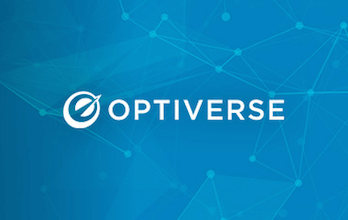
Download our FREE Testing Toolkit for A/B testing ideas, planning worksheets, presentation templates, and more!
Get It NowSqueeze Page
What Is A Squeeze Page?
A squeeze page is a landing page which is specifically designed to collect e-mail addresses from visitors and prospects. Squeeze pages are designed in such a way as to use incentives, scarcity, and other psychological tactics in order to “squeeze” a visitor into providing their e-mail.
Why Companies Use Squeeze Pages
Despite the many digital marketing channels that exist today, e-mail is still one of the most effective channels for online marketing. As such, many companies work hard to collect e-mail addresses from prospects so that they can market to them later.
Squeeze pages are an extreme form of landing page which are designed solely to collect e-mails. Squeeze pages often employ multiple persuasion techniques as well as a simple design with a primary CTA focused on e-mail collection.
Once the e-mail is collected, it is typically added to an e-mail autoresponse list, in which marketing automation can be used to send targeted e-mails to the prospect aimed at eventually converting them into a customer. Unscrupulous marketers may also sell lists of e-mail addresses or use the lists that they acquire through squeeze pages to market affiliate products.
Basic Elements Of Squeeze Page Design
Marketers generally keep the content – and the distractions – on a squeeze page to a minimum. Unlike a typical homepage or directory page, a squeeze page usually does not include a search box, navigational links or any other way to browse additional information.
The page is designed to keep the user focused on the singular goal of handing over their e-mail address.
Many squeeze pages offer free giveaways such as ebooks, videos, and reports as a way to incentivise users to provide their e-mail address.
In addition to text, some squeeze pages also utilize informative ‘teaser’ content such as video that helps to promote whatever the squeeze page promises to deliver.
Squeeze pages vary by industry and content type, but all include some combination of the following:
- Catchy headline
- Company logo
- Supporting copy in paragraph or bulleted format
- Teaser video
- Colorful graphics or photos
- Customer logos, testimonials and/or success stories
- Privacy policy and/or terms of service to build trust
- Call-to-action button
- Graphical elements (such as arrows) directing attention to the call-to-action button
- Scarcity (limited time offer or expiration date)
How To Improve Your Squeeze Page
Marketers employ a number of strategies for improving conversions on a squeeze page. Many of these are borrowed from direct response marketing, such as the use of eye-catching design, actionable headlines and clearly stated benefits for signing up.
Minimizing visual distractions is a commonly used technique – keeping the imagery simple and keeping the page clear of navigational or any other kind of links.
The only action that should be visible is the action you want the user to take.
Another effective strategy for improving the conversion rate of a squeeze page is to incorporate visual elements like arrows that direct the user’s eyes to the call-to-action button.
For certain products, a photo of an attractive person on a landing page boosts conversions significantly. For others, a photo of a beautiful landscape or vista may have the same effect.
One way to improve conversions is to communicate actual benefits in the call to action button instead of just a command. Rather than using the typical ‘Submit’ or ‘Subscribe,’ marketers can increase conversions with ‘Send Me My Free Tips’ or ‘Save $99 Now!’
Other common elements that marketers often include on squeeze pages are countdown timers, which convey a sense of security, or testimonials which can convey a sense of trust.
Exit pop-ups, which appear when users try to navigate away from the page, are another tactic that marketers often use to keep users on the squeeze page. The exit-pop often presents an even more lucrative, time-sensitive offer in order to get users to provide their e-mail address.
Using A/B Testing To Optimize Squeeze Pages
For optimal results, you can use a platform like Optimizely to A/B test a variety of strategies and creative variations of your squeeze page.
Variations in page format, headlines, designs and calls-to-action will resonate differently with different audiences. You can develop any number of hypotheses about how to boost conversion.
Once you have a clear set of ideas and hypotheses to test, Optimizely allows you to run tests on your site visitors, and using actual user behavior to inform your squeeze page design.
Ready to learn more?

Get your copy of the testing toolkit.
Use the testing toolkit to start or scale your testing program.

Want to stay ahead of the competition?
Help your organization master one of the four key initiatives covered in this webinar series.

Join the community.
Meet Optiverse — a place to explore, learn, and connect around experience optimization.